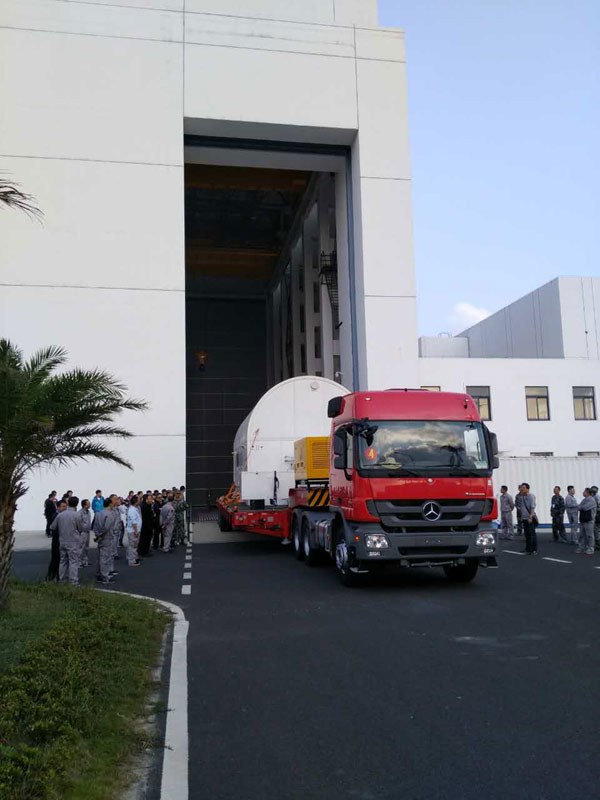Full coverage: China Tiangong-2 Space Lab Launch
China's first cargo spaceship, the Tianzhou-1, has arrived in South China's Hainan Province for its last 'body check' before being launched in April.

The Tianzhou-1 cargo spacecraft arrives at the Wenchang Space Launch Center in south China's Hainan Province for assembly and testing on Monday, February 13, 2017. [Photo: huanqiu.com]
It is the heaviest and largest spaceship in China. A payload of 6.5-tons will carry 40 pieces of equipment to the Tiangong-2 for over a dozen space experiments.
"This capacity was decided on the basis of the size of our space lab. Its carrying load is quite a leading index around the world," Bai Mingsheng, Tianzhou-1 chief designer with China Aerospace Science and Technology Corporation said.
Some of the equipment will also be hanging outside the ship's body, helping to increase its carrying efficiency.
The key mission for Tianzhou-1 is to dock with Tiangong-2, in a bid to supply fuel in orbit to the space lab. Technologies related to the process are crucial for the buildup of China's space lab.
"To ensure accuracy during the fuel supply with two floating spaceships, we also need to make related connectors float within a certain distance," Bai said.
But such technologies cannot be tested beforehand on the ground. That poses some potential risks to the mission.
"It is a new design plan, from the oil tanks to pipe valves and the discharge of propellants... we have done lots of tests on safety issues," Bai said.
The difference in air pressure between the two spaceships after docking will prompt the fuel to its destination.
The ship is set to dock 3 times. The target is to finish the process within 6 hours.
"This is a new test. If we could dock within 6 hours, all the spacecrafts in the future could adopt this technology, and the shorter time means the astronauts will be more comfortable," Bai said.
Fuel supply will be the focus of April's test launch. The astronauts will still have to manually move their daily necessities and experiment items from the Tianzhou-1 to the Tiangong-2.















